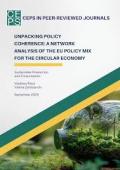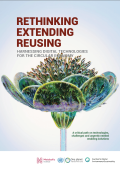
Green growth provides a means by which economic, environmental and social goals can be simultaneously achieved. It presents an opportunity to make existing industries more sustainable while at the same time encouraging new industries and a diversified economy. Technological innovation is essential to this transition, without innovation it will be very difficult and costly to address major environmental issues.
Addressing climate change while promoting economic growth requires the large-scale deployment of green technologies across key sectors such as power generation, transport and energy use. Although many of these technologies, such as wind and solar energy or hybrid and electric cars, are already available, they are often more costly than existing fossil fuel-based options, meaning either that further refinement is required or that new technologies must be developed. Investing in research and development (R&D), supporting commercialization, strengthening markets and fostering technology diffusion are all key policy actions required for the deployment of new technologies and innovations.
Relevance to the SDGs
The Sustainable Development Goals (SDGs) 9 and 17 call for action to foster innovation, with a special attention to the least developing countries, by enhancing scientific research, upgrading technological capabilities (SDG 9.5) and expanding international cooperation (SDG 17.6).
Explore green growth resources related to the SDGs:
SDG 9.5
Capacity building SDG 17.6
International Cooperation
Technology, data and innovation can make businesses more competitive, efficient, and effective, and are being used in some cases to create entirely new business models.
It is estimated that the volume of data created and collected doubles every three years, and businesses in sectors such as manufacturing are using data analysis to reduce their operating costs by 5-15%, and increase their gross profit margin by up to 30%. Data can also be used to increase transparency, improve decision-making, collect more detailed performance information, and provide more tailored products or services to customers.
For instance, many businesses are collecting and analysing data on energy consumption, production time, raw material use, and consumer behaviour and can use that information to identify current inefficiencies and plan more effectively. The advent of new technologies to manage and share this data, such as blockchain, can allow businesses to trace the origins of their raw materials, increase confidence in their products for consumers, and identify trends and patterns.















